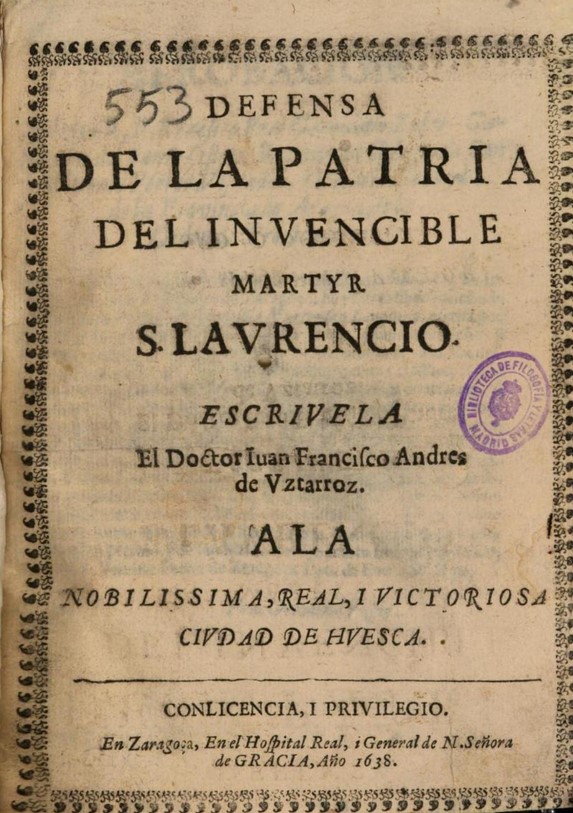Glossary
Martyr story

Other languages
- Dutch: martelarenboek
- French: martyrologue, livre des martyrs
- Italian: martirologio, vita di santi
- Polish: żywoty męczenników, martyrologium
Material form
Printed book, Single-sheet printSubject
Narrative literature and history, News and current affairs, Religion and moralityDescription
Amidst the religious controversies of the 16th and 17th centuries, especially in Germany, the Low Countries, England, and France, the lives and especially the deaths of contemporary martyrs were the subject of different kinds of publications. These included pamphlets (sometimes using the term history in their title), chapbooks (the French Bibliothèque bleue), songs, sermons, penny prints, letters, and writings of martyrs themselves that were (re)published after their deaths, as well as martyr books or martyrologies, i.e. collections of lives of martyrs.
Different denominations published their own martyr books to recount the atrocities they faced at the hand of the other party. The books consisted of a combination of print and prose, similar to the history prints (see News pamphlet), and recounted not only the death of specific martyrs, but also delved into why they made this offer for their faith. The martyr books had obvious didactical elements, such as the teaching of proper Christian doctrine in a fashion after the catechisms, and through teaching by example by portraying the lives and deaths of the faithful.
This teaching of doctrine and faithfulness often occurred through the inclusion of a dialogue piece mimicking the interrogation to which the martyr was subjected before their death. In this ‘interrogation’ account, the defendant would show their moral superiority and greater knowledge of the holy text. These books were considered essential for the upbringing of young children well into the 17th century.
Immensely popular in Europe were the martyr books containing descriptions of Catholic (Franciscan, Jesuit, Augustinian, Dominican) martyrs in seventeenth-century Japan. They were translated and published in Italian, Spanish, Portuguese, French, German, Polish, Dutch, and English.
Also liturgical martyrologies were printed across Europe, and in Spanish since 1586. The only non-liturgical collection of martyr stories to be published in Spain was that by Thierry Ruinart in the 17th century. In Italy, martyr stories are difficult to distinguished from saints’lives.
Related terms
martyrology, martyr book, acta martyrum, pamphlet, devotional literature, history, ballad, sermon, saint’s life
Sources
L.M. Brockey, ‘Books of Martyrs: Example and Imitation in Europe and Japan, 1597—1650.’ Catholic Historical Review 103 (2017), 207–223.
L.M. Brockey and J. S. Algirdas Elisonas, ‘The Tragedy of Quabacondono: An Elizabethan Account of the Last Days of Toyotomi Hidetsugi’, Monumenta Nipponica, 76 (2021), 1-68.
S. González-Sarasa Hernáez, Tipología editorial del impreso antiguo español, thesis Universidad Complutense de Madrid (2013), 227, 268-272. https://eprints.ucm.es/id/eprint/24020/
B.S. Gregory, Salvation at Stake. Christian Martyrdom in Early Modern Europe (Cambridge, MS/London: Harvard University Press, 1999).
J. Pollmann, ‘Met grootvaders bloed bezegeld: Over religie en herinneringscultuur in de zeventiende-eeuwse Nederlanden’, in: De Zeventiende Eeuw. Cultuur in de Nederlanden in interdisciplinair perspectief 29:2 (2013), 154-175.

